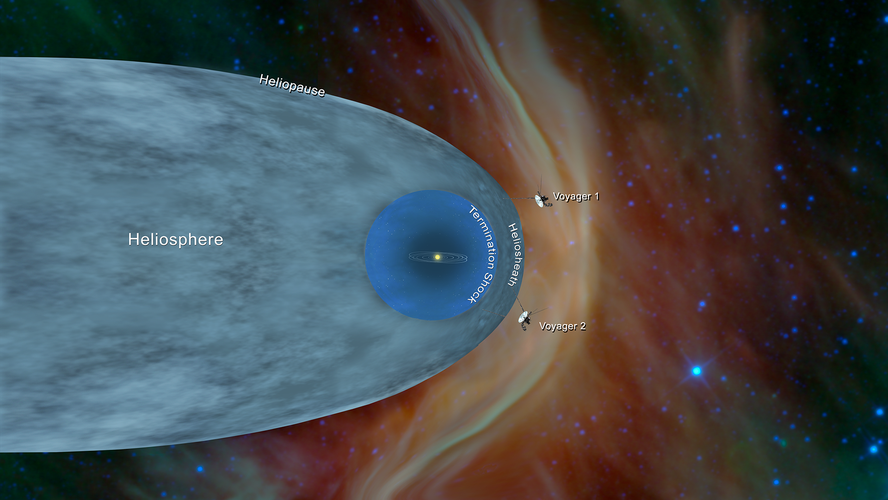Published input data in the interstellar space "Voyager 2"

Since its launch in 1977, Voyager 2 has already made 18,000 million kilometers. The data show that a year ago it came out of the heliosphere, the protective bubble that forms the magnetic field of the Sun, that encompasses the planets of the solar system, and that it entered the mysterious interstellar space. Data from the heliosphere crossing have been analyzed and the first results have been published in the journal Nature Astronomy. Specifically, the heliopausa has provided information on the final limit of the heliosphere.
The twin of Voyager 2, Voyager 1, crossed the heliopause seven years ago, but from another point they were thrown in different directions. And in it, by mistake, he hardly sent data on helium; they could not exactly identify when the solar plasma went from heat to the extreme cold of interstellar space. In the case of Voyager 2, however, they observed a change in the density of the plasma, which went from being warm in the Sun bubble and low density, to being much colder and higher density when it entered the interstellar space. The researcher has surprised how fluids are capable of generating limitations.
Now researchers try to understand the nature of this limitation. For example, they want to clarify what type of spill occurs from inside out and from outside inwards. When Voyager 2 crossed the heliopause, they saw a leak of material coming out of the bubble and reaching a distance of 170 million km in the galaxy. And in 2012, Voyager1 saw a leak of material, but it was inside outside. Based on the analysis of data, scientists have now proposed to clarify why these escapades occur.
They also intend to investigate the cosmic rays of interstellar space, although they only reach 30% to Earth, since they can have a great influence in the future if they are conducting missions guided to Mars.
Although the Voyager twins have crossed the heliosphere, they have not yet left the solar system. For this you will need thousands of years. However, the twins will run out of fuel within five years and cannot announce it.
The results of the data sent by Voyager 2 have been shown in 5 articles:
“Voyager 2 plasma observations of the heliopause and interstellar medium”.
“Plasma densities near and beyond the heliopause from the Voyager 1 and 2 plasma wave instruments”.
“Magnetic field and particle measurements made by Voyager 2 at and near the heliopause”.
“Energetic charged particle measurements from Voyager 2 at the heliopause and beyond”.
“Cosmic ray measurements from Voyager 2 as it crossed into interstellar space”.





